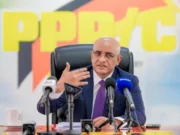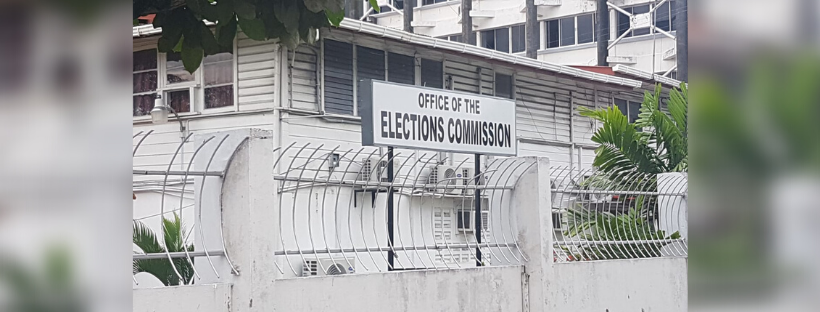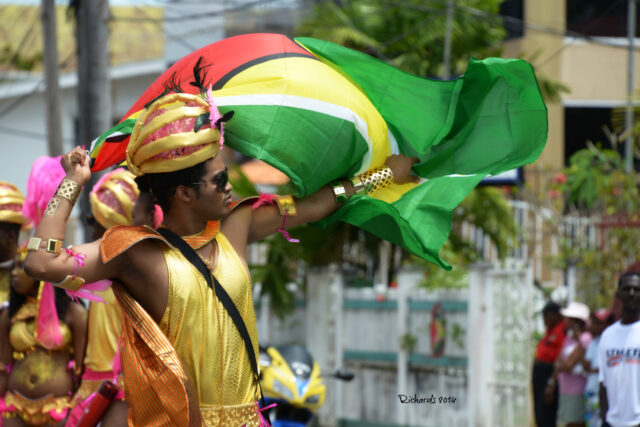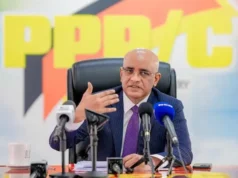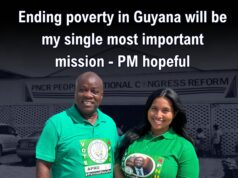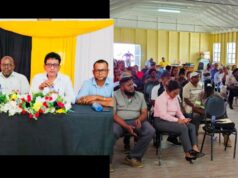By: Sueann Wickham
In recent years, memories of Mashramani in its true essence often flood my mind. Many years ago it used to be a day when the festival brought the streets of Guyana alive with pulsating soca and calypso rhythms, dazzling costumes, and an infectious spirit of unity and celebration.
Mashramani, derived from the Amerindian language meaning “celebration after hard work,” originally commemorated Guyana’s achievement of becoming a Co-operative Republic in 1970 and was always more than just a holiday. It was a cultural phenomenon and a testament to Guyana’s diverse heritage.
Now, it seems like a distant echo of a bygone era and diluted culture which values commercialism over experience.
Growing up, Mashramani held a special place in my heart. I was always a lover of soca and calypso and Mashramani was the time I got to bask in my culture the most. I still remember the intricate planning of my parade day outfits, late rehearsals of dance routines for school Mashramani competitions, and the anticipation of watching our local revellers parading through the streets alongside my friends and family.
But as the years have passed, I’ve noticed a gradual shift—a subtle but undeniable change in the essence of Mashramani. What was once a vibrant celebration of Guyanese culture now seems to be overshadowed by new influences of dancehall, and other genres of music, commercialism, apathy, and a loss of cultural integrity.
The dilution of Mashramani can be attributed to various factors, but perhaps the most significant is the heavy influence of dancehall music, which has permeated every aspect of the celebration. Years ago, as Mashramani approached, the radio stations would fill the airwaves with the infectious rhythms of soca and calypso tunes. Artists like Jumo Primo, Adrian Dutchin, Timeka Marshall, Big Red, and artists from the Kross Kolor family, would dominate the playlists, building anticipation and excitement among Guyanese listeners.
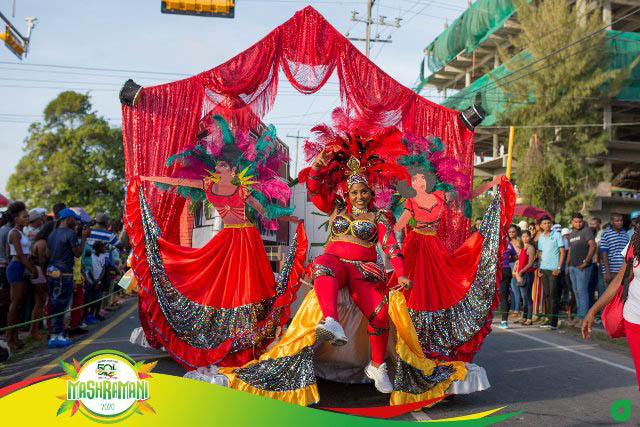
The announcers themselves would contribute to the hype, leaving citizens impatient as they counted down the days to Mashramani. Relatives from afar would fly in just for the occasion, adding to the sense of excitement and unity. However, in recent years, the atmosphere has shifted dramatically. The enthusiasm that once surrounded Mashramani seems to have dwindled, leaving many wondering why.
The answer lies in our attempt to mimic other cultures and neglect our own. Dancehall music, originating from Jamaica, has infiltrated our creative spaces, overwhelming the traditional sounds of soca and calypso. While there’s nothing inherently wrong with enjoying dancehall, as I’m quite a fan myself, its dominance has come at the expense of our cultural identity. It is imperative that we become fond of enjoying other cultures whilst still preserving our own.
Let’s use Trinidad as an example. Trinidadians, too, enjoy dancehall, but during its Carnival season, soca and calypso reign supreme. They understand the importance of preserving their cultural heritage and showcasing it proudly during festivities. Even Jamaica, the birthplace of dancehall, celebrates soca prominently during their Carnival.
Yet, in Guyana, we are still celebrating everyone else’s culture but our own. The yearly J’ouverts—a wet fete party adopted from our Caribbean community is filled with dancehall when its main purpose is to celebrate the freedom of our once enslaved ancestors through soca and calypso.
Soca-themed parties devolve into a mishmash of genres, and even our own soca artists struggle to find a place in the lineup. Promoters blame the DJs for the lack of diversity, but ultimately, they have the power to dictate what is played at their events.
Furthermore, the commercialization of Mashramani has transformed it into a profit-driven enterprise, with sponsors and advertisers dictating the direction of the festivities. The emphasis on flashy floats and extravagant costumes has eclipsed the true essence of the holiday, leaving behind a shell of its former self.
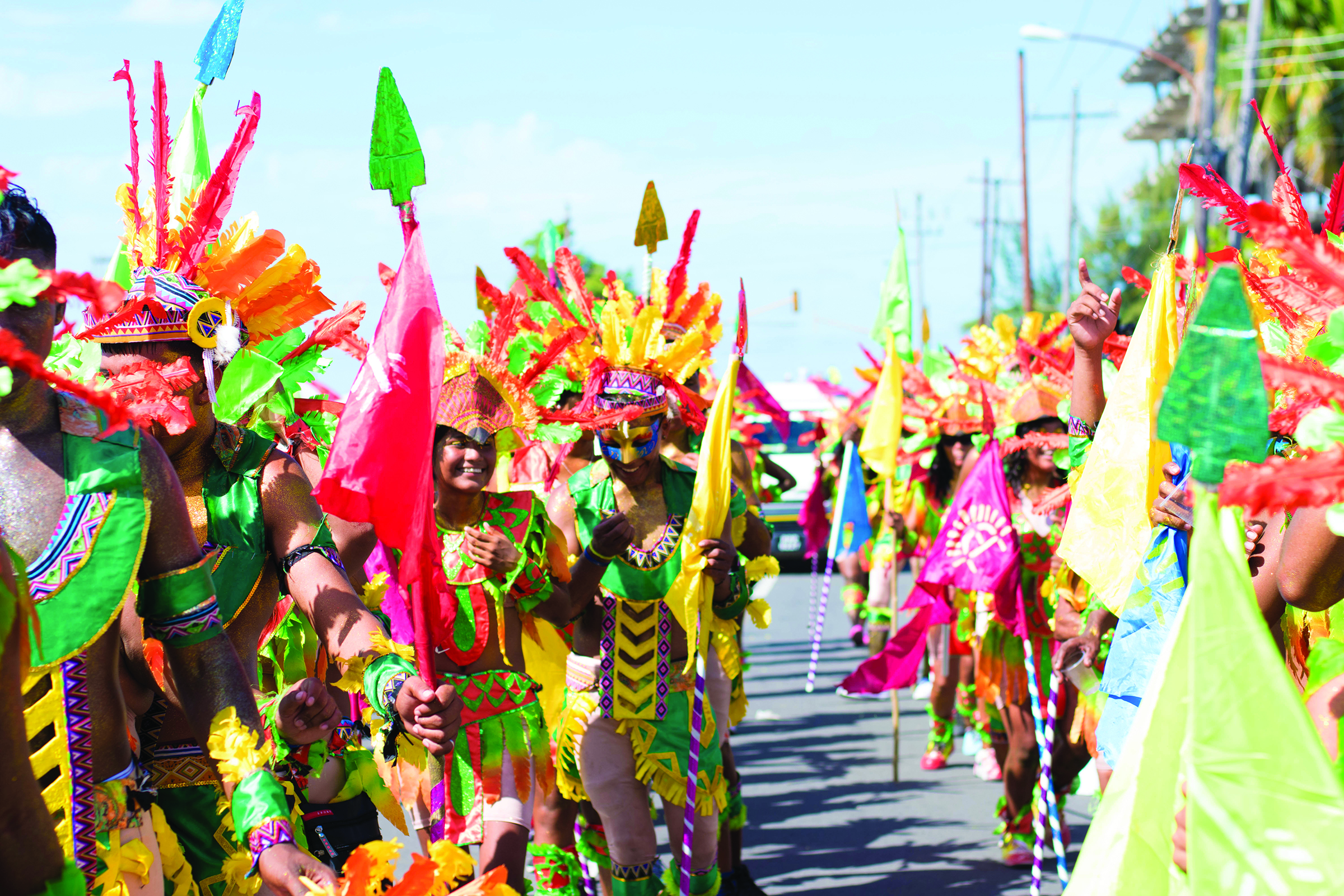
So, what can be done to reverse this alarming trend and preserve the true spirit of Mashramani? First and foremost, we must reclaim ownership of our cultural heritage. It’s time to recenter Mashramani around its original purpose: celebrating the resilience, creativity, and diversity of the Guyanese people.
This means prioritizing community involvement over corporate interests, fostering grassroots initiatives that empower local artists and performers, and instilling a sense of pride and responsibility in the younger generation. Education also plays a crucial role—we must teach our children the significance of Mashramani and instil in them a deep appreciation for their cultural heritage.
In addition to the heavy influence of dancehall during Mashramani, Guyana’s adoption of carnival from its Caribbean counterparts has further contributed to the cultural dilution of our celebrations. Since the onset of this private sector-led carnival in May 2018, promoters have struggled to execute it correctly. Despite being an imitation of another culture’s tradition, the execution has been marred by the same issues plaguing Mashramani—namely, the dominance of dancehall music and the inclusion of unrelated genres like hip-hop, pop, and R&B.
Fetes and concerts, while themed around soca, are still overrun by dancehall, leaving little room for authentic Guyanese sounds. Promoters, tasked with organizing these events, have yet to strike the right balance between paying homage to Caribbean carnival traditions and staying true to Guyanese culture. It is a missed opportunity, especially considering the potential tourism benefits touted by proponents of the private carnival.
One would think that imitating another culture’s carnival would involve meticulous attention to detail, ensuring that every aspect—from the music to the costumes to the overall atmosphere—reflects the spirit of the tradition. However, Guyana’s carnival falls short of this mark, failing to capture the essence of Caribbean carnival in its truest form.
Instead of pouring resources into a carnival that feels like a pale imitation of its Caribbean counterparts, why not redirect that energy and investment into revitalizing Mashramani? By adding more concerts, events, and activities that celebrate Guyanese culture authentically, we can reclaim Mashramani as a true reflection of our identity and heritage. Not only would this honour our cultural roots, but it could also serve as a more compelling tourism draw, showcasing the unique traditions and customs that make Guyana truly special. It’s time to prioritize authenticity and cultural integrity in our celebrations, ensuring that both Mashramani and any future carnival endeavours truly represent the spirit of Guyana.
As we navigate the challenges facing Mashramani, we can look to neighbouring countries like Trinidad and Tobago for inspiration. Despite facing similar pressures of globalization and commercialization, Trinidad has managed to uphold its cultural traditions with unwavering dedication.
Year after year, Trinidadians come together to celebrate events like Carnival, preserving their unique customs and rituals while adapting to the changing times. By embracing innovation without sacrificing authenticity, Trinidad serves as a shining example of how to safeguard cultural heritage in the face of adversity.
Mashramani is more than just a holiday—it’s a symbol of Guyanese identity, resilience, and unity. But if we continue down the path of commercialization and cultural dilution, we risk losing the very essence of what makes Mashramani special. It’s time to reclaim our heritage, reignite the flames of tradition, and ensure that Mashramani continues to shine brightly for generations to come.
To bring about meaningful change, we must advocate for a renewed focus on authenticity and cultural preservation within the Mashramani festivities. This requires a collaborative effort involving government bodies, cultural organizations, community leaders, and the general public.
Additionally, investing in cultural education and awareness programmes can help instil a sense of pride and ownership among Guyanese citizens. By teaching the history and significance of Mashramani in schools and community centres, we can empower future generations to carry forward our cultural traditions with passion and purpose.
In the age of digital communication and social media, we have unprecedented opportunities to revitalize Mashramani and engage new audiences in its celebration. Leveraging technology and innovation, we can create immersive online experiences, virtual exhibitions, and interactive platforms that showcase the beauty and diversity of Guyanese culture.
Furthermore, embracing sustainable practices and eco-friendly initiatives can help reduce the environmental impact of Mashramani while promoting responsible stewardship of our natural resources. From recycling programs to energy-efficient infrastructure, there are countless ways to make Mashramani more environmentally friendly and socially conscious.
As we stand at a crossroads in the evolution of Mashramani, it is essential to reflect on the values and traditions that define our cultural identity as Guyanese. While the challenges ahead may seem daunting, they also present opportunities for growth, innovation, and collective action.
